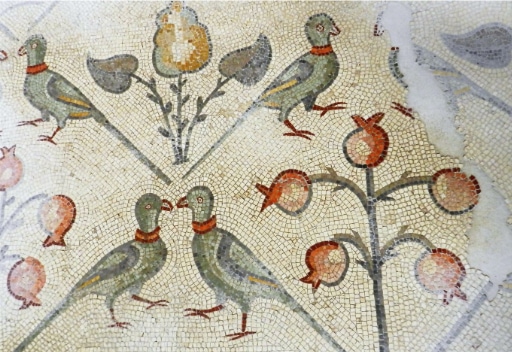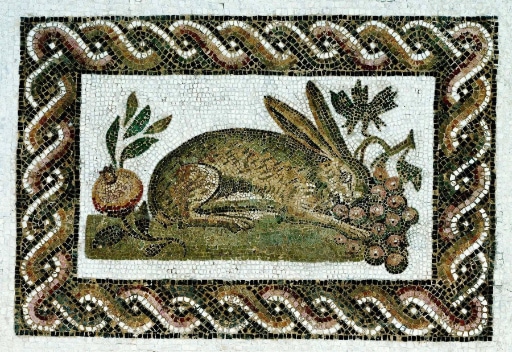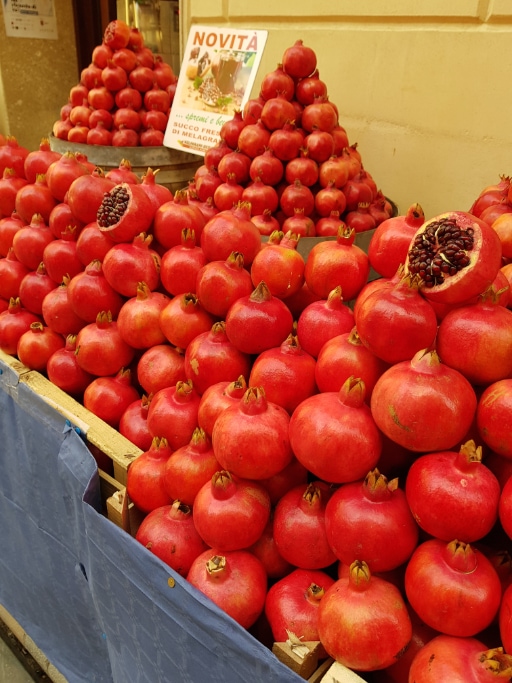Pomegranate Farm


Key points
- Pomegranates are appreciated in cooking and have a rich cultural history in parts of India including Rajasthan
- We are experimenting growing organic pomegranates at Ikaki Bagh for our own use
- Growing pomegranates may also provide small-scale economic opportunities for local village communities
Pomegranates originate in a region that arcs from Iran to Northern India. They thrive in drier climates. This helped their early spread across to the Mediterranean and the Middle East.
The earliest records of the pomegranate date from Egypt from the third millennium BC. Pomegranate remains have been found in a C14th BC shipwreck off the coast of Turkey.
The pomegranate has been uniquely revered since ancient times among many societies. It is represented widely in art and design over thousands of years. This is because of the close association of the fruit with fertility, prosperity and medicinal properties.
Cultural History
The pomegranate was used to represent the Tree of Life by the Assyrians who controlled the largest Empire in the world at the time (911-605 BC).
In 957 BC Solomon’s Temple was built in Jerusalem. Pillars in the temple were decorated with pomegranates. The fruit was also represented on the robes of Jewish priests. This is identified in the Torah, the first part of the Jewish Bible.
The pomegranate features prominently in Greek mythology. The most famous involved Persephone, daughter of Zeus and Demeter, the Goddess of the harvest, grains and the fertility of the Earth. Persephone was abducted by Hades, Lord of the Underworld.
Hades tempted Persephone with a juicy pomegranate. By eating the fruit, Persephone was joined to Hades. As a result, the pomegranate became a symbol of the indissolubility of marriage.
Demeter, in her anger and grief prevented the earth from bearing fruit unless she saw her daughter again. Zeus arranged a compromise: Persephone would live with Hades for one third of the year and the other two thirds with Demeter. Persephone’s return from the Underworld each year is marked by the arrival of spring.
Pomegranates were introduced to Rome via Carthage. Carthage and Rome fought bitter wars from 264 BC to 116 BC for control of the Mediterranean. Rome triumphed and the pomegranate became increasingly in Roman mosaics and other decorative arts as the Empire expanded. One example of the popularity of the pomegranate in Rome was women wearing headdresses made of pomegranate twigs to signify their marital status.
Pomegranates also enjoy a special status in other ancient cultures and religions.
The Qur’an states that pomegranates grow in the Kingdom of Heaven.
In Judaism, it was believed pomegranate seeds were said to number 613—one for each of the Bible’s 613 commandments.
In Hinduism, the fruit has a long history associated with fertility and prosperity. They are most closely associated with It is also associated with both Bhoomidevi (the earth goddess) and Lord Ganesha
.

Growing pomegranates in India
The largest commercial quantities of pomegranates are grown in India’s third largest state of Maharashtra. Smaller commercial quantities are grown on other states. The fruit is grown in parts of Rajasthan but not on any large commercial basis.
Pomegranate grows well under semi-arid conditions. Over thirteen varieties of pomegranates are grown world-wide. Most popular in India are Ganesh, Bhagwa, Ruby, Arakta and Mridula.
The pomegranate’s root system is shallow, with most of it being less than 60cm deep. They grow in to large, mature trees or strong, wide shrubs.
Importantly, pomegranates tolerate a range of soils. They don’t require much water except in Spring when more watering is needed to promote growth and fruit setting.
Pomegranates are also grown domestically in people’s homes as large multi-trunk shrubs. They are regarded as a symbol of prosperity. The shrubs are self-pollinating and usually fruit in abundance through August to November. The fruit is popular as part of festive celebrations used for making juices, syrups and flavourings to accompany sweets.
Enjoying pomegranates
The most enjoyed part of pomegranates are the arils, the ruby red juicy coating surrounding the seeds. Arils are a delicious snack in on their own. In Northern India, pomegranate arils are most commonly used in cooking and are known as ‘anardana’ (there are a few spelling variations of the word).
The arils are used as a mildly fruity, souring agent in a similar way to how tamarind or kokum is used. Anardana is also used as a substitute for lime juice. The arils retain a stickiness after drying making for a pleasant texture to match their fruity taste.
Anardana is especially popular in Mughali-styled dishes such as:
- Chole (a type of chickpea curry),
- Dal Tadka (a popular dal dish) and
- Aloo Anardana (a lipsmacking potato and pomegranate seeds dish).
Anardana is also used to make an excellent, tangy chutney. This is particularly popular as an accompaniment to pakoras, samosas, tandoori snacks and fritters.
Growing pomegranates to sell pre-packed, dried ready-to-use arils is a one way to add value. Another way to add value is juicing the fruit.
Health benefits
Pomegranate juice is claimed by many to have health benefits, such as being high in having anti-inflammatory properties.
Nutritionists often recommend pomegranate in the diet to reduce weight and control cholesterol. It has also been popular in the treatment of gastroenterological ailments since ancient times.
The fruit is an also good source of antioxidant vitamin-C, providing about 17% per 100 g of the daily requirement.

Visit Us
Ikaki Bagh means ‘one of a kind orchard’ in Hindi.
At our farm, we are experimenting with growing pomegranates organically. This is part of our focus on growing high quality produce aimed at higher end culinary use and value-add opportunities.
If we are successful in relation to pomegranates, our next step will be to introduce small scale production in partnership with local farmers. This step would support our overall strategy to help diversify local farmers’ income through steadily increasing organic food production.
We welcome everyone to stay at Ikaki Niwas, our boutique hotel in Jaipur and/or take one of our tours to Ikaki Bagh.
You will experience something of our own Indian perspective on the beautiful pomegranate including:
- In our delicious home-cooked meals
- Our cooking classes
- A tour of our farm
- Advice on the best produce markets in Jaipur where, in season, you see the appreciation of the pomegranate in full swing
